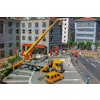The October issue of Asphalt Contractor offers our Training Review & Schedule (see page 70). This section lists various training opportunities from asphalt industry suppliers that you can take advantage of to improve your team. But what happens when your employee is not an A player – or even a B or C player? You know the guy - he might be a valuable long-term employee if only he would straighten up.
Eric Herrenkohl, founder and president of Herrenkohl Consulting, a management consulting firm, offers these six steps to help problem employees improve or leave.
1. Draw a line in the sand
Confront poor performance directly and quickly. Schedule a one-on-one session with the employee and objectively lay out where his performance has fallen short. Give specific examples then listen to the employee's responses. If the employee takes personal responsibility, move to step 2. If not, make clear that a failure to improve his performance will be grounds for termination.
2. Provide step-by-step direction
Take the time to go step-by-step through the process that you want an employee to follow to get better results. There are times when employees fail simply because they don't know what to do.
3. Watch one, do one, teach one
If you want to give employees every chance to succeed, get hands on with them in the field. Watch them in action. Have them watch you handle situations similar to the ones with which they are dealing. Take the time to make sure that they understand what to do and why. Doing this can save you time in the end. If you follow these steps and the person's results don't improve, you'll have to make a change.
4. Set time frames for completion
After having a direct conversation with an employee about his poor performance, don't leave the meeting without setting the date for your next meeting. The employee needs a clear timeframe for improving his results. Putting a follow-up meeting on the calendar makes you accountable for following up.
5. Build your farm team
Many times executives don't deal with poor performers because they don't have anyone else lined up to do the job. One of the best things that you can do is build a "farm team" of potential employees who work for other people right now but are interested in coming to work for you. If you have someone in mind for the job, you'll be more effective in confronting a poor performer and firing him if you have to.
6. Make the hard decision
Rarely do you hear, "I fired that guy too quickly." More often you hear, "I should have fired that guy a long time ago." Follow the steps above and hope for a good result. If you don't see the improvements you want, make the hard decision to let that person go.











![Fcp Racatac Chair 10893876[1]](https://img.forconstructionpros.com/mindful/acbm/workspaces/default/uploads/2025/10/fcp-racatac-chair-108938761.10l0At5WXv.png?ar=16%3A9&auto=format%2Ccompress&bg=fff&fill-color=fff&fit=fill&h=135&q=70&w=240)


